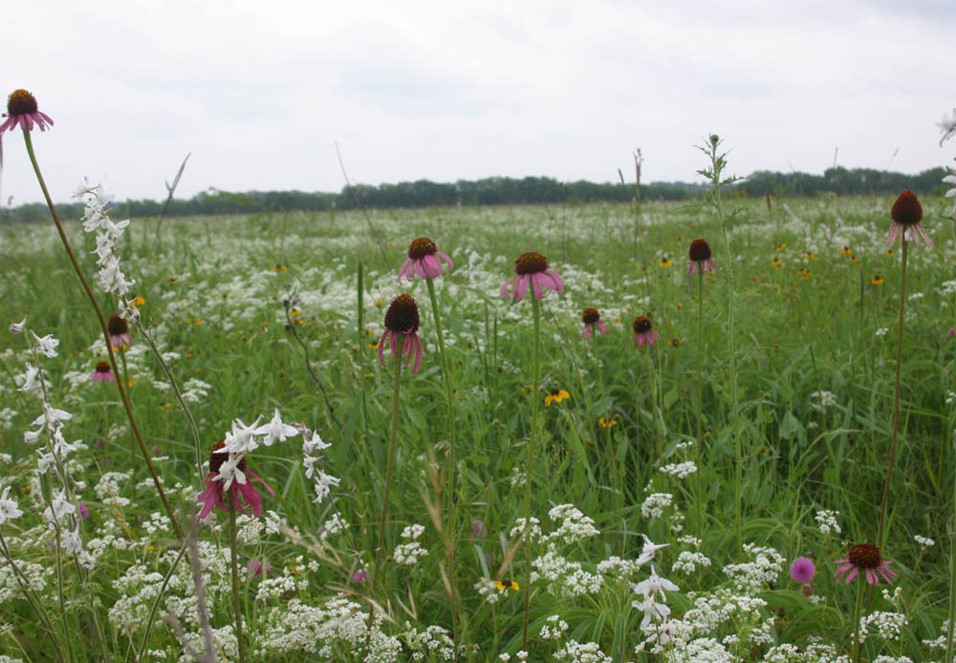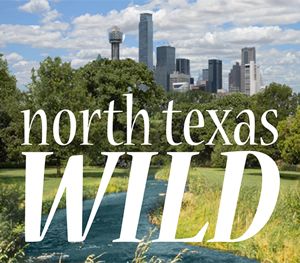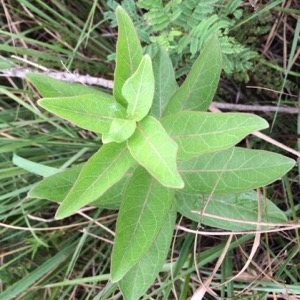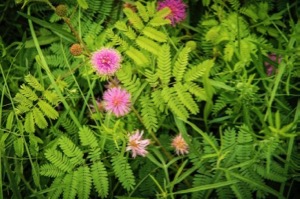North Texas Wild: Funds needed to save Blackland Prairie parcel in Hunt County

The Native Prairies Association of Texas aims to raise $50,000 to buy the Paul Mathews Prairie in Hunt County. Photos courtesy of NPAT.
 When less than 1 percent of an ecosystem remains, a few thousand acres out of the millions prior, the opportunity to preserve it is a genuinely big deal. Such is the case with the Blackland Prairie, a regional ecosystem in which the eastern half of DFW resides.
When less than 1 percent of an ecosystem remains, a few thousand acres out of the millions prior, the opportunity to preserve it is a genuinely big deal. Such is the case with the Blackland Prairie, a regional ecosystem in which the eastern half of DFW resides.
Native Prairies Association of Texas hopes to purchase a rare and pristine 100-acre Blackland remnant called Paul Mathews Prairie, located in Hunt County east of Greenville. It’s just 17 miles away from 1,400-acre Clymer Meadow, one of the largest preserved Blackland parcels and owned by the Nature Conservancy.
Being located near the US 380 corridor, and very close to the fast-developing east side of Collin County, Paul Mathews Prairie faces intense pressure from commercial development and prairie challenges such as encroachment of invasive and woody plant. The fundraising goal of $50,000 covers both the land price (which is an incredible bargain), plus an endowment for the cost of prairie maintenance and stewardship.
Wildfires and bison once kept woody species from taking over prairie grasslands. Prairie managers are able to do prescribed burns and rotation grazing by bison, but those instances are too few. As a result, prairie maintenance is a high-cost, manual-labor endeavor.
PRAIRIE DREAMS
 It was Paul Mathews’ dream to preserve the prairie he played in as a boy during the early 1900s. He purchased the acreage in 1969, and maintained it by haying a few times a year. A few decades later, Mathews placed it under a TNC conservation easement, which restricts future development. Mathews died at age 101 in 2005, after having been honored with a Texas Land Steward Award for his efforts, but the current owner wishes to sell.
It was Paul Mathews’ dream to preserve the prairie he played in as a boy during the early 1900s. He purchased the acreage in 1969, and maintained it by haying a few times a year. A few decades later, Mathews placed it under a TNC conservation easement, which restricts future development. Mathews died at age 101 in 2005, after having been honored with a Texas Land Steward Award for his efforts, but the current owner wishes to sell.
Milkweed at Mathews Prairie.
Brandon Belcher, North Texas Preserves Manager for TNC doing his past-grad work at Texas A&M-Commerce, shares that during their management, in addition to haying, brush has been removed and prescribed fires implemented.
“The prairie stands strong and resilient, but the threats of development and invasion are likely to increase in the near future,” said Belcher. “The plant community on this particular remnant is incredibly diverse and shows many of the ‘indicator’ species known in the area. Species like Topeka purple coneflower (Echinacea atrorubens), Compassplant (Silphium laciniatum), and Rattlesnake master (Eryngium yuccifolium) are thought to only grow in a true prairie, and each is abundant on Mathews Prairie in summer.”
Jim Eidson, a former TNC manager of Clymer, considers the Mathews Prairie to be an A-plus example of a vertisolic (gumbo clay) prairie with very pronounced gilgai formations. He stresses its vigorous populations of tallgrass species such as Eastern gamagrass, switchgrass, and indiangrass.
PRAIRIE NETWORK
 Permanently preserving Mathews Prairie is a vital part of creating a North Central Texas ecological network from the large Clymer Meadow, 52-acre Parkhill Prairie and a handful of modest prairie remnants and restorations. (See NPAT Blackland Chapter list of North Texas prairies.)
Permanently preserving Mathews Prairie is a vital part of creating a North Central Texas ecological network from the large Clymer Meadow, 52-acre Parkhill Prairie and a handful of modest prairie remnants and restorations. (See NPAT Blackland Chapter list of North Texas prairies.)
Mathews Prairie is just 17 miles from the 1,400-acre Clymer Meadow, one of the largest preserved Blackland parcels and owned by the Nature Conservancy. Courtesy of TNC.
“These prairies all work together as islands to support one another through genetic exchange,” says Belcher. “Propagules and pollen are carried between sites by various pollinator and migrant species, and this exchange serves to strengthen the plant and animal communities against invasion, pathogens and other such threats.”
The preservation of Paul Mathews Prairie in this network is so important that a NPAT-TNC partnership arose as the best course.
“TNC and NPAT complement each other well, and the dual protection offered by this relationship assures these spectacular prairie remnants will remain intact for many years to come,” says Belcher. “The Talbot Prairie, near New Boston in Bowie County, is owned by NPAT, while TNC holds the conservation easement on the property.”
HELP PRESERVE MATHEWS PRAIRIE
Due to the owner’s desire to sell there is a limited time to raise funds to buy this beautiful prairie. And the timing is perfect.
“We have an offer to match funds donated for Matthews Prairie up to $20,000,” says Pat Merkord, executive director of NPAT. “If we can raise $20,000 then we will receive $20,000, placing us most of the way to our goal.”
At this moment, 37% or the $50,000 goal has been reached, so donations are still needed.
Donate now online at the NPAT website. Or donate by mail (noting Mathews Prairie in the memo line of your check) to NPAT, 415 N. Guadalupe St. PMB 385, San Marcos, TX 78666.
“Purchasing the property will ensure that NPAT, with its vast prairie expertise, will be able to manage the preservation of this extremely rare slice of a critically endangered ecosystem,” says Merkord.
VISITING MATHEWS PRAIRIE
Paul Mathews Prairie will be open for use by NPAT, TNC, Master Naturalists, Native Plant Society of Texas, Audubon and other land conservation groups,” says Merkord. “This is an important aspect of this acquisition. We just need to arrange those visits. It is not a public park, but no one will be discouraged from exploring and studying if scheduled.”
Donate to Capital Campaign to Save Paul Matthews Prairie
Stay up to date on everything green in North Texas, including the latest news and events! Sign up for the weekly Green Source DFW Newsletter! Follow us on Facebook, Twitter and Pinterest.
See original post at: https://www.greensourcedfw.org/articles/funds-save-blackland-prairie-parcel-hunt-county





